Florida Gardening Month By Month
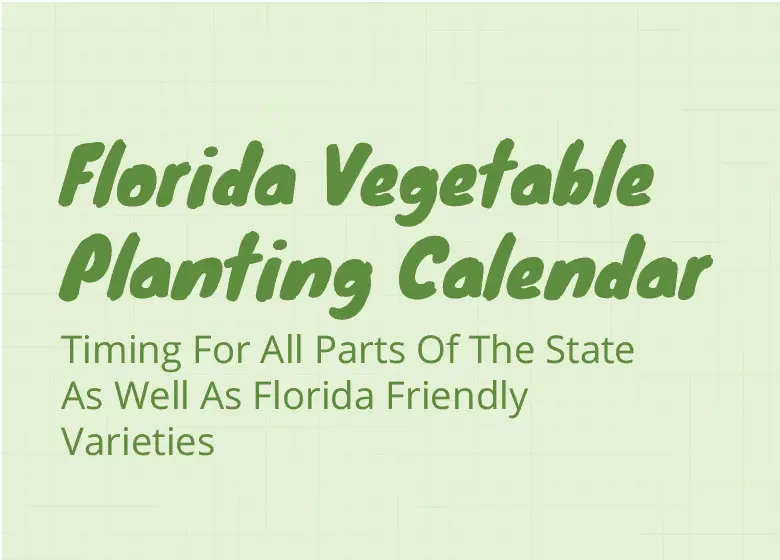
The Florida vegetable planting calendar is different than most other states. Most of Florida has a subtropical environment but in the northern
The best time to plant vegetables in Florida is in the early spring time and early fall. These times will change depending on what part of the state you are in.
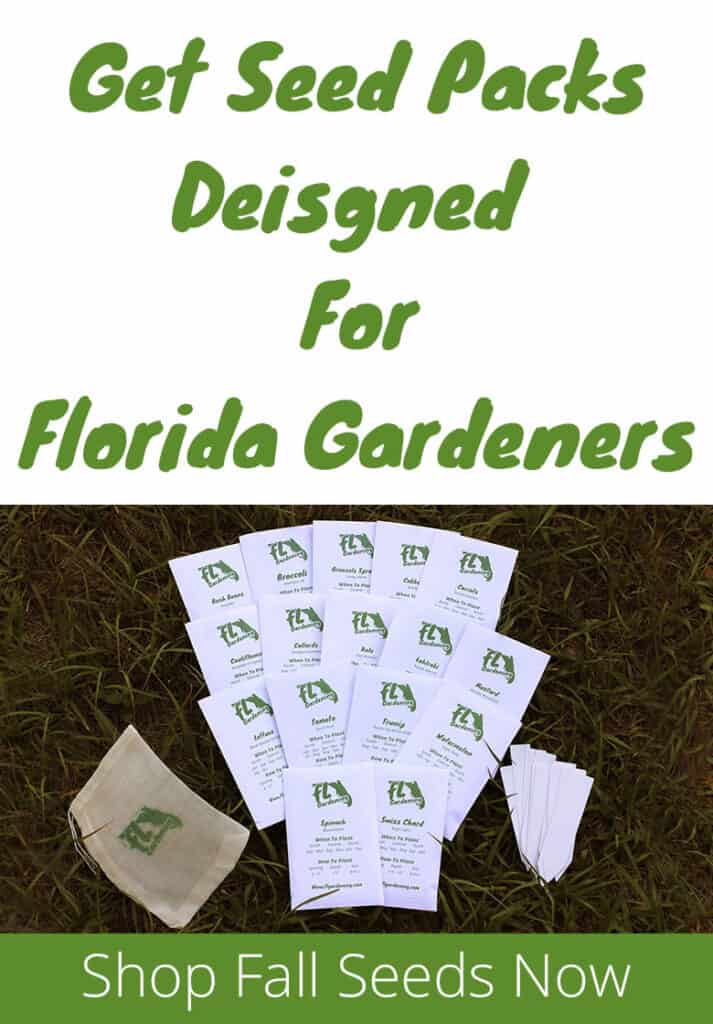
Best Time To Plant Vegetables In Florida
| North Florida | March and August |
| Central Florida | February and September |
| South Florida | August through March |
South Florida is different than north and central Florida, instead of two separate growing seasons it has one extended growing period. Seeing frost and freeze in south Florida is not unheard of but it is very rare.
These dates are not set in stone, they are based on the average date of
The times listed above are the ideal times to plant. however, in reality you do have a window of a few weeks in which you can successfully plant and grow your veggies. Look below to check out planting calendars for your area of Florida.
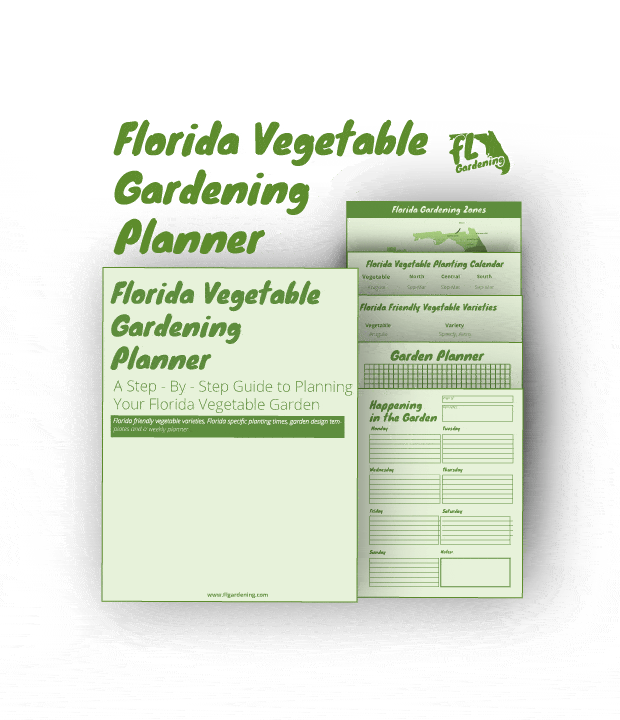
Get your Free Florida Vegetable Gardening Guide.
North, Central And South Florida Hardiness Zones
North Florida Experiences regular frosts and even freezes during the year. Central Florida can experience frosts in the later months of the year while south Florida rarley experiences frost.
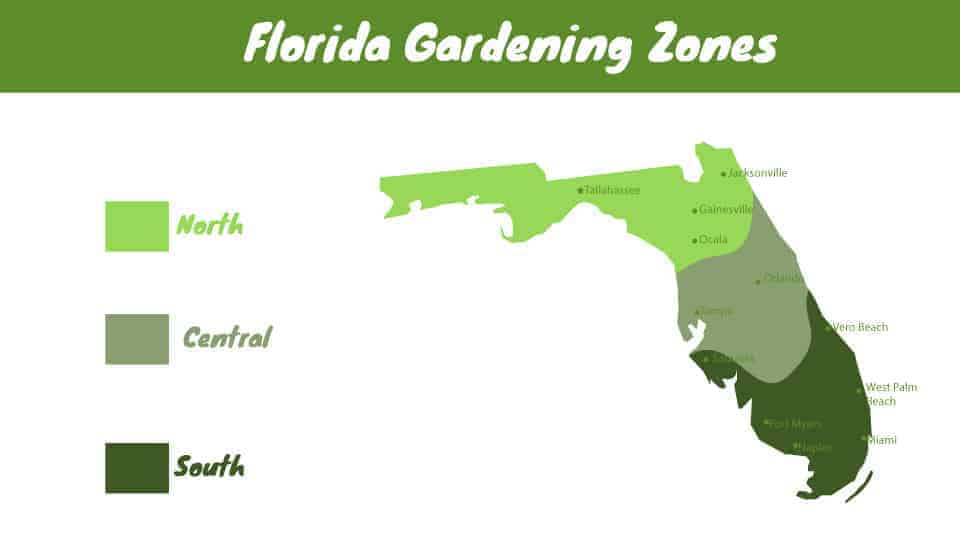
Technically Florida has seven plant hardiness zones.
- 8a: 10-15°F
- 8b: 15-10°F
- 9a: 20-25°F
- 9b: 25-30°F
- 10a: 30-35°F
- 10b: 35-40°F
- 11a: 40-45°F
I find simplifying the zones to be easier for me. North Florida is zones 8a-9a, central Florida is zones 9b-10a and South Florida is 10b-11a.
And like I said earlier, these are all just averages. We may have a cold year and have early or late freezes. Or we may have a warmer than average year and get no frost at all. It really just depends!
North Florida Vegetable Planting Calendar
North Florida has weather that is more like the rest of the united states compared to any other part of the state.
They actually have seasons, you can get some chilly weather up there during the winter time. The coldest month of the year for north Florida is January. The overnight low-temperature averages 38F during the month of January. But during the summertime temperatures can sore to the low to upper 90s.
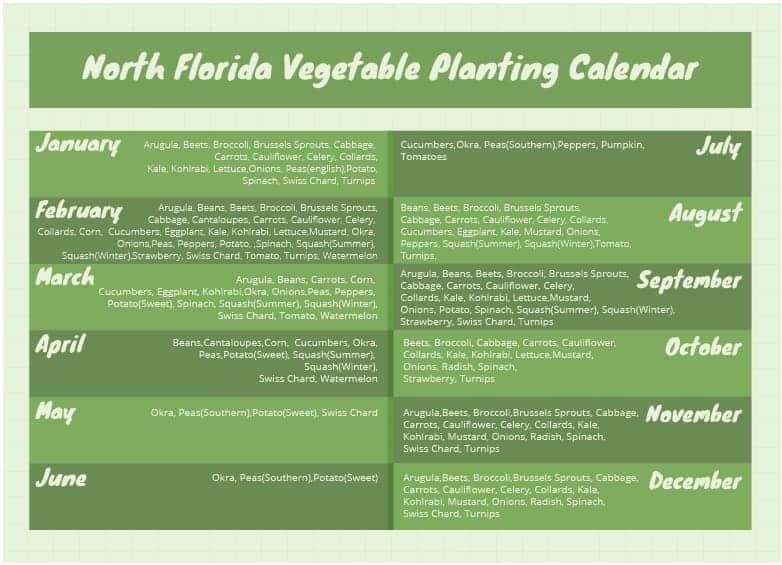
Central Florida Planting Calendar
Central Florida has a sub-tropical environment. The warmest month for us in central Florida on average is August. it's also the wettest month for us as well.
The average temperature in Central Florida thoughout August is 90F.
Central Florida's Coldest month is also January, The average low during this time is around 53F.
However, we do randomly see freezing weather here. The record low in central Florida is about 20F.
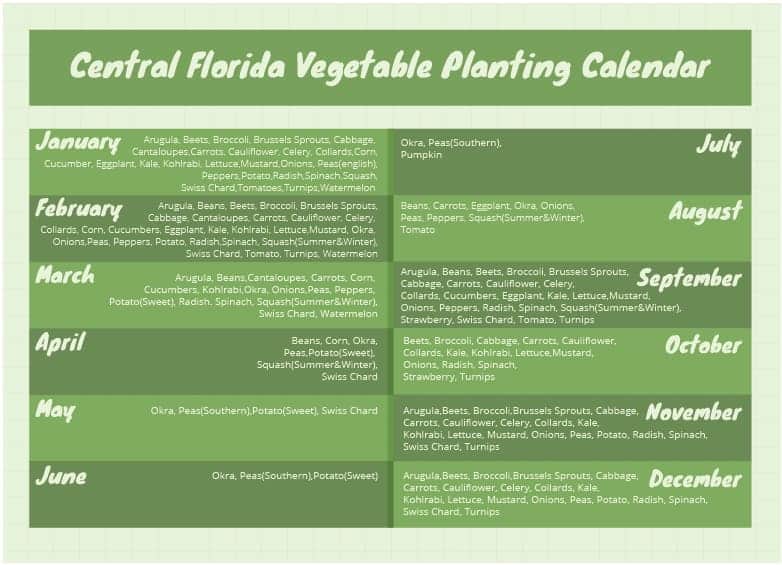
South Florida Planting Calendar
South Florida is almost like a tropical environment. The hottest days of South Florida are during Septemeber. The average Temperature in the southern part of the state during September is 90F.
January is also the coldest month in the state. The average temperature in January here is 55F.
Although, south Florida does still see the very rare freeze. The coldest temperature ever recorded was 30F in Miami. But if you're in the Keys there has never been a recorded Freeze. The lowest temperature ever seen in the Keys was 40F.
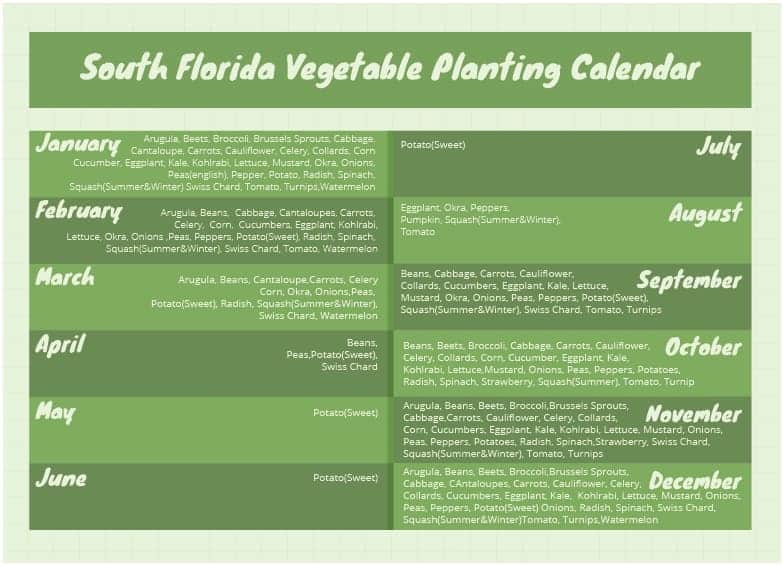
Ideal Conditions For Vegetables
Most vegetables love plenty of sunshine and warm temperatures. If you look on most gardening sites or seed packets they tell you to plant during the warm months.
For most parts of the united states those conditions are happening during the summer months. Our Florida summers are more like tropical conditions, they are really hot and really wet. That combo is not the best for most veggies.
So the Ideal conditoins for veggies are met in Florida during our spring time and our Fall time. These are warm conditions but not HOT conditions.
What Vegetables Grow Best In Florida?
You can grow almost any vegetable that you want in Florida. Anything From Arugula to Zucchini. The varieties that grow well in the northern parts of the united states will not thrive in Florida.
For instance you can grow tomatoes in all parts of the united states but certain varieties will thrive in certain conditions.
A Florida Everglades Tomato is by far the easiest tomato I have ever grown. I've struggled with plenty of tomato's that I've purchased from lowes or home depot, often times the varieties that they offer there are not suited for Florida's unique Climate.
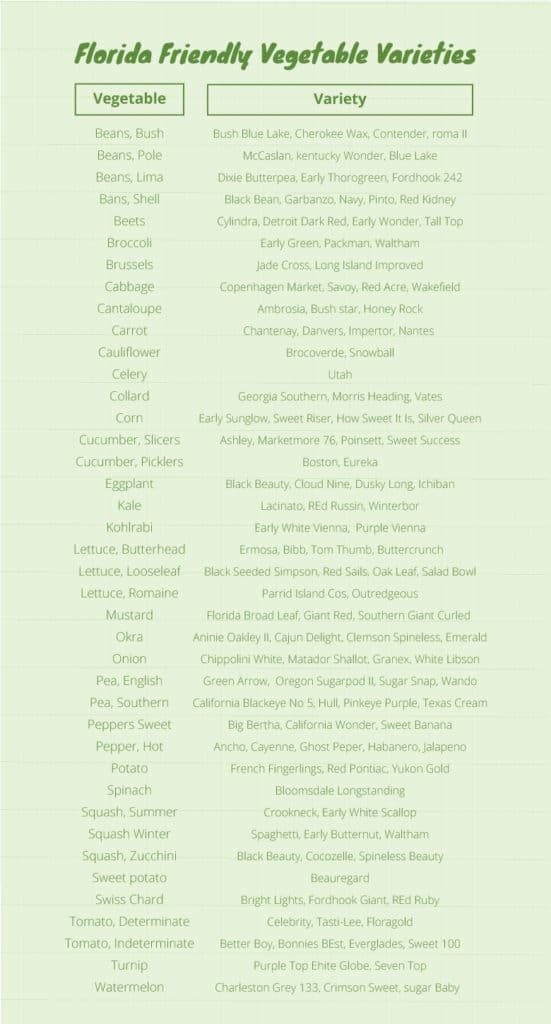
Preparing Soil For Vegetables
Vegetables love a soil that has good airflow while also stasying moist. It must have good organic matter and not be compact.
These are the ideal conditions for veggies to thrive. this does not mean that veggies will not grow in less than ideal conditions. Florida soil is usually sandy, and void of organic matter.
If you are planting directly into your Florida dirt be sure to buy a few bags of black cow compost. You can get it on Amazon (Check price) but that's a sure way to make your UPS driver hate you and I'll bet you can get it at your local nursery.
And don't forget to mulch. Mulching is so so important. A nice 2-3 inch layer of mulch will help retain moisture while also slowly breaking down to feed the soil.
If building a raised bed though I've always had good luck if I build my soil with this mix:
- 40% Peat moss
- 40% Compost
- 20% perlite
- Worm castings
- Mykos
How To Fertilize Vegetables
The way that you fertilize your vegetables will depend on what you are growing.
For instance, a collard green, which is grown for its leaves will need a different fertilizer compared to something that sets fruit, like a tomato.
The three numbers that you see on most bags are the Nitrogen(N), Phosphorous (P) and Potassium (K) values. usually, something like a 6-8-8 or a 10-10-10 are pretty common.
Each nutrient does something different for the plant.
Nitrogen works with the plant to produce green leafy growth. Phosphorous helps the plant bloom and set fruit. Potassium is a good overall health booster.
So, Fertilizing a collard green(or any other "lettuce-like" plant) with a fertilizer that is high in phosphorous will not lead to a greater harvest. Plants with the main goal of green leafy growth should be fertilized with something that is nitrogen focused. I like to use Fish emulsion for my leafy greens.
It smells like death but it's full of nitrogen and my collards love the stuff.
Plants that bloom and set fruit need a more well-rounded fertilizer. You can probably pick up a good organic fertilizer at any box store or local nursery close to you.
I prefer to have something with lower nitrogen and higher phosphorous and potassium because I think the helps the plant focus more on flowering and fruiting than it does leaf growth.
Common Florida Vegetable Garden Pests
- Aphids
- Stinkbugs
- Hornworm
- Cabbage Beetle
- Armyworm
- Leafminers
- Whitefly
- Thrips
Each one of these bugs is harmful to your garden. Some bugs have pointy mouths that they use to suck your plant's juices out. Some lay eggs on the undersides of your plant's leaves so that their babies can feast on your plant.
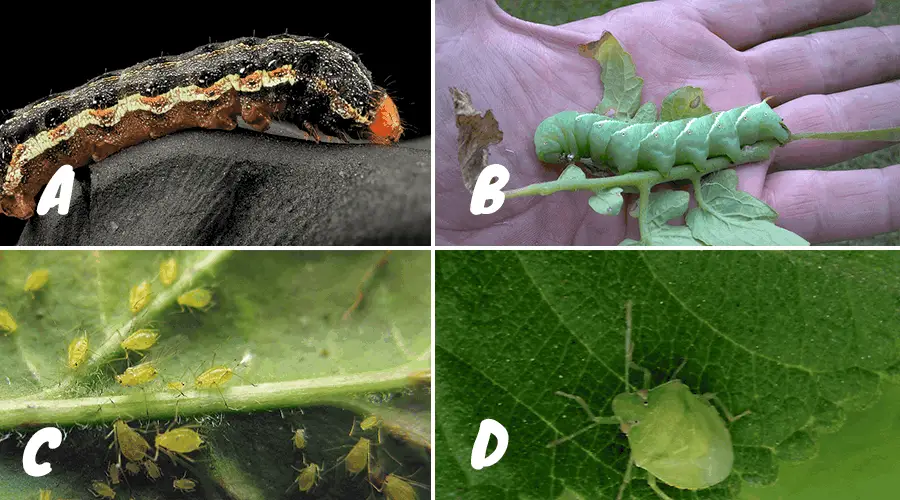
There are tons of bugs that love the Florida climate. in fact there are WAY MORE good bugs than there are bad bugs.
The best way to deal with pests in your garden is to have a lot of diversity. The more plants you have the better off you will be. The easiest way to add a nice, beneficial touch to the garden is to grow herbs with your veggies.
These herbs benefit you, and attract loads of beneficial pest.
I Think You'll find This Helpful: Easy Herbs To Grow In Florida
Planting Vegetables In Florida
Planting vegetables in Florida follows a much different calendar than the rest of the united states.
In north and central Florida we have two separate growing seasons, while south Florida really has one, long, extended growing season.
Plant Vegetables in north Florida in March and then again in August.
Plant Vegetables in Central Florida in February and then again in September.
In South Florida you can plant your vegetables from August through March.
Remember, these dates are not set in stone. Some years will be warmer than others while other will be colder. There are two things these dates are based off of.
Weather that is too cold & weather that is too hot.
We want to land in between these two times to give our vegetables the best chance to survive.
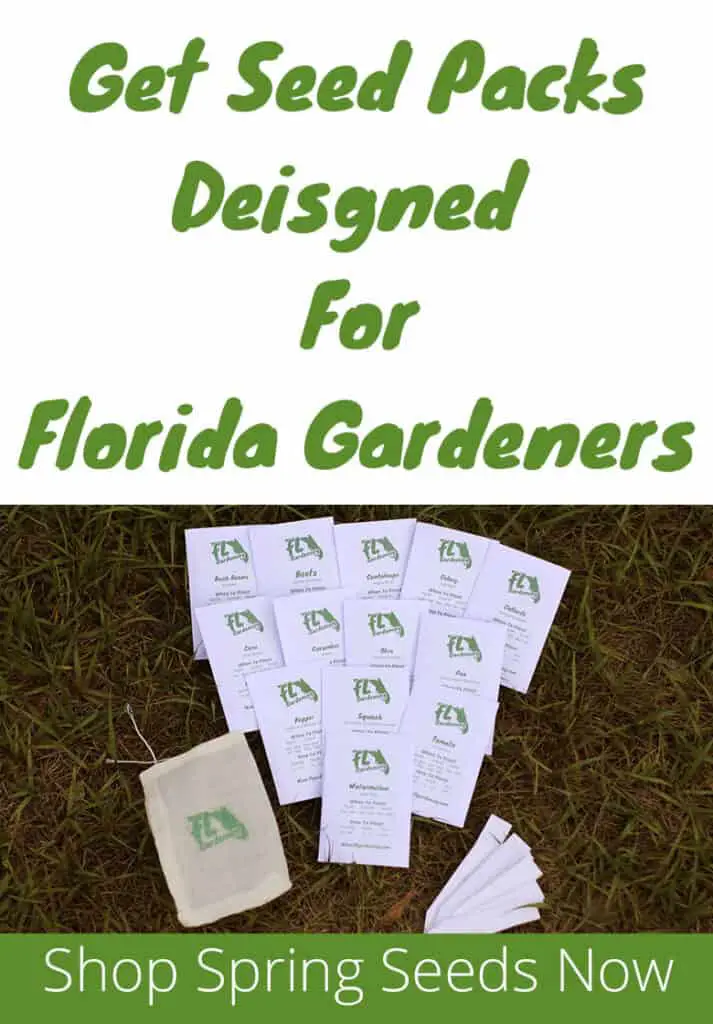
Resources:
Florida Fruit And Vegetable Gardening, Robert Bowden(Resources)
Ifas Vegetable Gardening Guide(Resources)
Florida Gardening Month By Month
Source: https://www.flgardening.com/florida-vegetable-planting-calendar/
Posted by: dotyandre1985.blogspot.com

0 Response to "Florida Gardening Month By Month"
Post a Comment